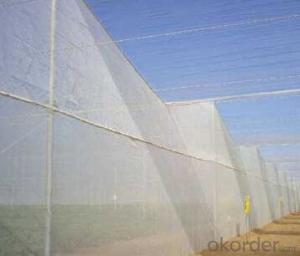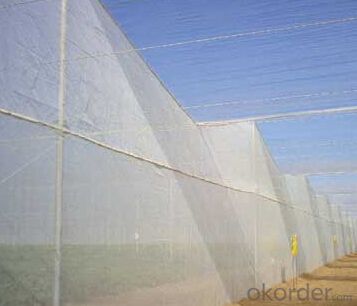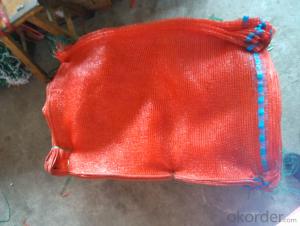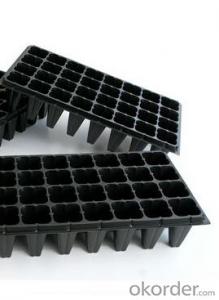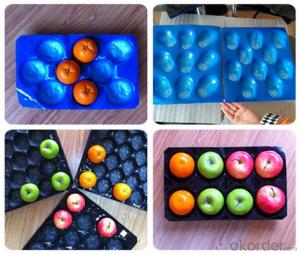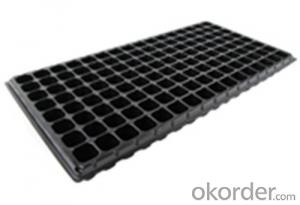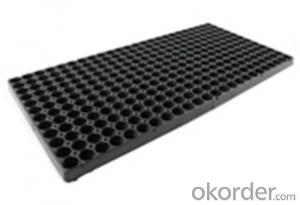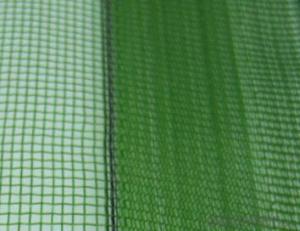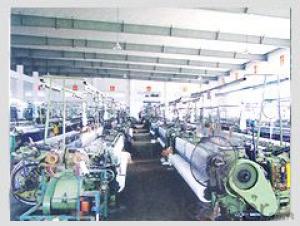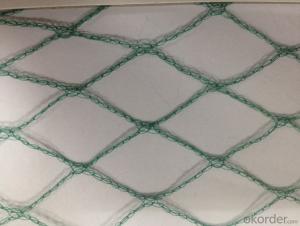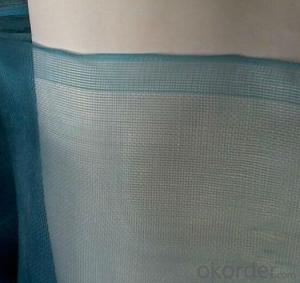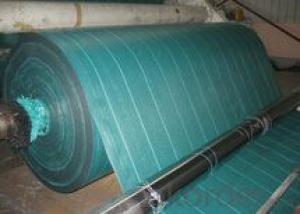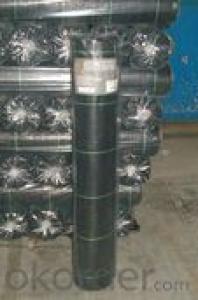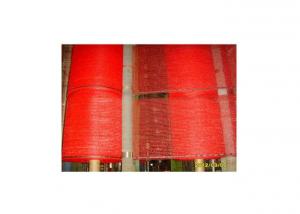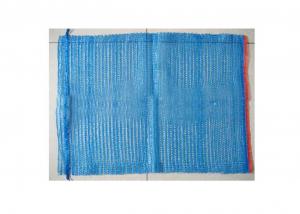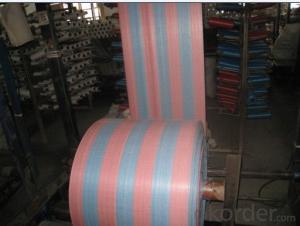White AntiInsect Net for Agriculture Plant
- Loading Port:
- Ningbo
- Payment Terms:
- TT OR LC
- Min Order Qty:
- 40000 m²
- Supply Capability:
- 10000000 m²/month
OKorder Service Pledge
OKorder Financial Service
You Might Also Like
Anti-Insect Net
Introduction:
It is weaved by High-density polyethylene (HDPE) UV stabilized mono filament, and is widely used in greenhouse construction.
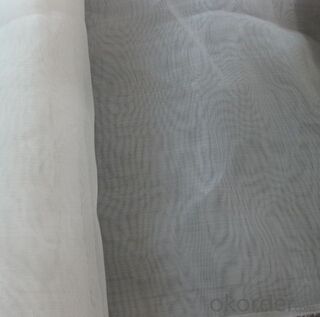
Specifications:
Fabric Weight: 80gsm
Uv. Content: 0.3%
Width: 1m, 1.5m, 2m (can be joined to 10m)
Length: 20m, 50m, 100m
Color: White
Minimum life length: 4 years, under normal weather conditions and use.
Applications:
- Being an effective protection against insects like white fly, etc.
- Helping reduce the use of phytosanitary products against insects/plagues.
- Allowing maximum ventilation in hot seasons.
Packing: rolls on cardboard tubes & wrapped in plastic.
FAQ:
1. How many years can it be used?
At least three years, it can also be customized according to the customer's requirements.
2. What color is it made?
Black, Green, White, Dark Green, Bule o it is customized according to the customer's requirements.
3. How to transport?
Usually, we use the container by sea transportation.
4. When is the delivery date?
Usually the production needs 30 days, then it will be shipping.
- Q: How do you maintain ground cover plants in extreme temperatures?
- To maintain ground cover plants in extreme temperatures, it is crucial to provide adequate care and protection. Start by selecting resilient plant varieties that are suited for the specific climate. Provide regular watering to keep the soil moist, especially during heatwaves. Mulching the soil helps conserve moisture and regulate temperature. It is also essential to monitor the plants for signs of stress or damage and promptly address any issues. In extreme cold, use protective coverings or blankets to shield the plants from frost or freezing temperatures. Pruning and removing dead or damaged plant material can also help maintain overall plant health.
- Q: What are the different sizes and thicknesses of agricultural plastic films?
- Agricultural plastic films come in various sizes and thicknesses to cater to different farming needs. Sizes typically range from small rolls to large sheets that can cover entire fields. Thicknesses can vary from thin films, around 0.5 to 1 millimeter, which are used for mulching and weed control, to thicker films, around 1 to 3 millimeters, which are employed for greenhouse covers and tunnel farming. Additionally, there are specialized agricultural films with customized sizes and thicknesses for specific applications such as silage storage and soil fumigation.
- Q: What types of plastic bins are used for grain storage?
- There are various types of plastic bins that are commonly used for grain storage, such as polyethylene bins, polypropylene bins, and high-density polyethylene (HDPE) bins. These bins are specifically designed to provide airtight and moisture-resistant storage, ensuring the preservation and protection of grains from spoilage and pests.
- Q: How do agricultural plastic products help with soil erosion prevention?
- Agricultural plastic products help prevent soil erosion by acting as a protective barrier. They are used to cover the soil, preventing it from being directly exposed to the elements such as wind and water. This cover helps to reduce the impact of rainfall and wind, preventing soil particles from being carried away and reducing erosion.
- Q: What are the rules and guidelines in place to protect the environment from the impact of agricultural plastic products?
- <p>Environmental regulations on the use of agricultural plastic products vary by country and region, but generally aim to reduce pollution and promote sustainable practices. These may include restrictions on the types of plastics used, requirements for recycling or proper disposal, and incentives for using biodegradable alternatives. Some areas enforce bans on certain plastic products, while others mandate the use of thicker plastics to prevent breakage and littering. Additionally, there are often guidelines for the responsible use of plastic mulch films, nets, and other products to minimize their environmental impact. Compliance with these regulations is crucial to protect soil health, reduce plastic pollution, and promote a sustainable agricultural ecosystem.</p>
- Q: Where can I purchase a plastic gun. I've read the KGB used these back in the day with bullets made of plastic, wood or clay to avoid detection?
- You can purchase a plastic gun in any toy store, some will even shoot a plastic or wooden bullet out of their spring loaded barrels. Plastic and wooden bullets are available. Usually used for riot control because they are a less than lethal round. Plastic guns, like the Glock, have a polymer (plastic) frame which is reinforced with metal inserts. The slide (upper part) and barrel are of solid metal. There is no such thing as a plastic gun that fires real ammo.
- Q: What types of plastic materials are used in making livestock water troughs?
- Livestock water troughs are commonly made from high-density polyethylene (HDPE) plastic materials due to their durability, resistance to chemicals, and ability to withstand harsh weather conditions. HDPE is a popular choice as it is non-toxic, easy to clean, and does not rust or corrode.
- Q: What are the different uses of agricultural plastic mulch?
- Agricultural plastic mulch has various uses in modern farming practices. It is commonly used to promote weed control by preventing the growth and spread of unwanted plants, thus reducing competition for nutrients and water. Additionally, plastic mulch helps in conserving soil moisture by reducing evaporation, ultimately aiding in the efficient use of irrigation. It also acts as a barrier between the soil and the crops, preventing direct contact and minimizing soil-borne diseases. Moreover, plastic mulch can enhance soil temperature, extending the growing season and providing optimal conditions for crop growth. Lastly, it aids in improving yield and quality of fruits and vegetables by preventing soil splashing, keeping produce clean, and reducing the risk of rot or damage.
- Q: I am looking for documentaries or info on how different plastics can be recycled. Which are easiest to recycle?
- the way i understand it, all plastics are easy to recycle. Only problem is determined by the cost. The cheapest are not much subjected to recycle but dispose of unlike the thick and big ones that would command high scrap value. I hope malls would charge 500% more from the cost of their bags so consumers would be forced to reuse them or bring along their own bags when shopping.
- Q: Particle foam packing box used to cover the fresh food of toxic substances in radiation?
- Particle foam packing box used to cover the fresh food of toxic substances in radiation
Send your message to us
White AntiInsect Net for Agriculture Plant
- Loading Port:
- Ningbo
- Payment Terms:
- TT OR LC
- Min Order Qty:
- 40000 m²
- Supply Capability:
- 10000000 m²/month
OKorder Service Pledge
OKorder Financial Service
Similar products
Hot products
Hot Searches
Related keywords
